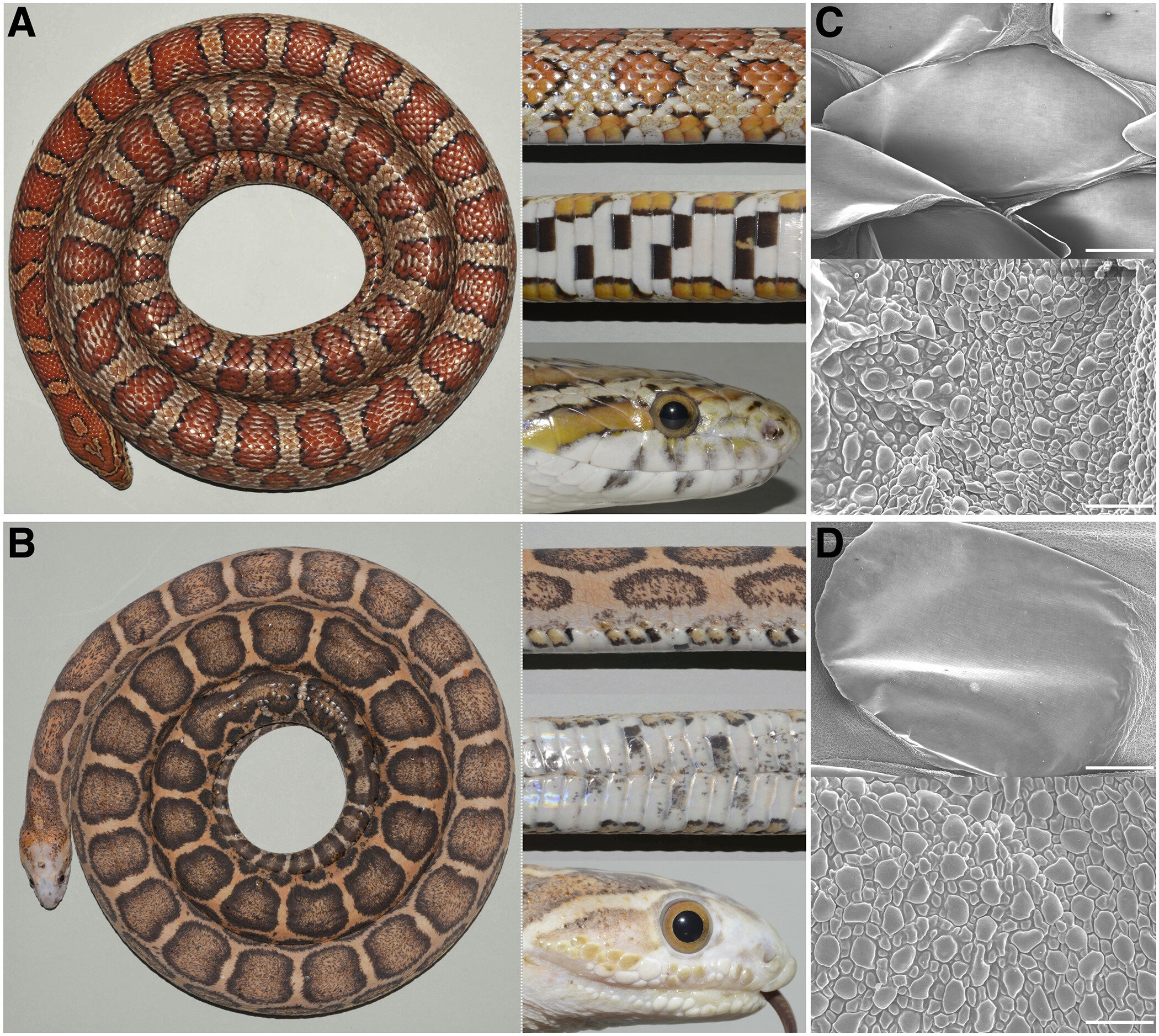
A team of geneticists and evolutionary specialists at the University of Geneva, along with a colleague from the University of Zurich, have made an intriguing discovery about the hexagonal patterns found on certain snake species. Contrary to popular belief, these patterns are not self-organizing. This groundbreaking study, recently published in the prestigious journal Science Advances, involved the use of the revolutionary CRISPR-Cas9 gene editing tool to create the world’s first genetically modified snake.
Hexagonal patterns have long fascinated researchers, especially when observed on the backs and sides of snakes. Previous studies have shown that these patterns originate from placodes, minuscule structures on the snake’s skin. While most animals have randomly distributed placodes, snakes have a remarkably organized placement. In fact, the renowned mathematician Alan Turing even devised mathematical formulas to describe this organization. The goal of this study was to understand the mechanism behind the formation of these well-organized hexagonal patterns found on snakes.
The research team chose to focus on the corn snake, a type of rat snake known for its distinct hexagonal patterns. These snakes were an ideal choice due to their ease of handling, non-poisonous nature, and minimal aggression towards humans. Notably, the hexagonal patterns are only present on the snake’s back and sides, while the belly remains scale-free.
Utilizing various techniques, the team meticulously studied the development of scales both above and below the snake’s body. They discovered that the scales on the underbelly formed first and aligned with cells that play a crucial role in the development of ribs, muscles, vertebrae, and skin. Subsequently, two independent waves of scale development emerged, gradually converging and resulting in the formation of the distinct hexagonal patterns on the snake’s back and sides.
The team then conducted genetic engineering experiments on four sample snakes, successfully disabling the EDA gene responsible for scale production on the back and sides. This groundbreaking discovery confirmed that the formation of these scales is not self-organizing and occurs independently of the EDA gene pathway.
More information:
Athanasia C. Tzika et al, Somitic positional information guides self-organized patterning of snake scales, Science Advances (2023). DOI: 10.1126/sciadv.adf8834
© 2023 Science X Network
Citation:
Editing a snake genome to stop production of dorsal scales (2023, June 20)
retrieved 20 June 2023
from https://phys.org/news/2023-06-snake-genome-production-dorsal-scales.html
This document is subject to copyright. Apart from any fair dealing for the purpose of private study or research, no
part may be reproduced without the written permission. The content is provided for information purposes only.
Denial of responsibility! SamacharCentrl is an automatic aggregator of Global media. In each content, the hyperlink to the primary source is specified. All trademarks belong to their rightful owners, and all materials to their authors. For any complaint, please reach us at – [email protected]. We will take necessary action within 24 hours.

Shambhu Kumar is a science communicator, making complex scientific topics accessible to all. His articles explore breakthroughs in various scientific disciplines, from space exploration to cutting-edge research.

